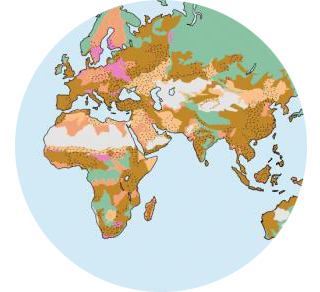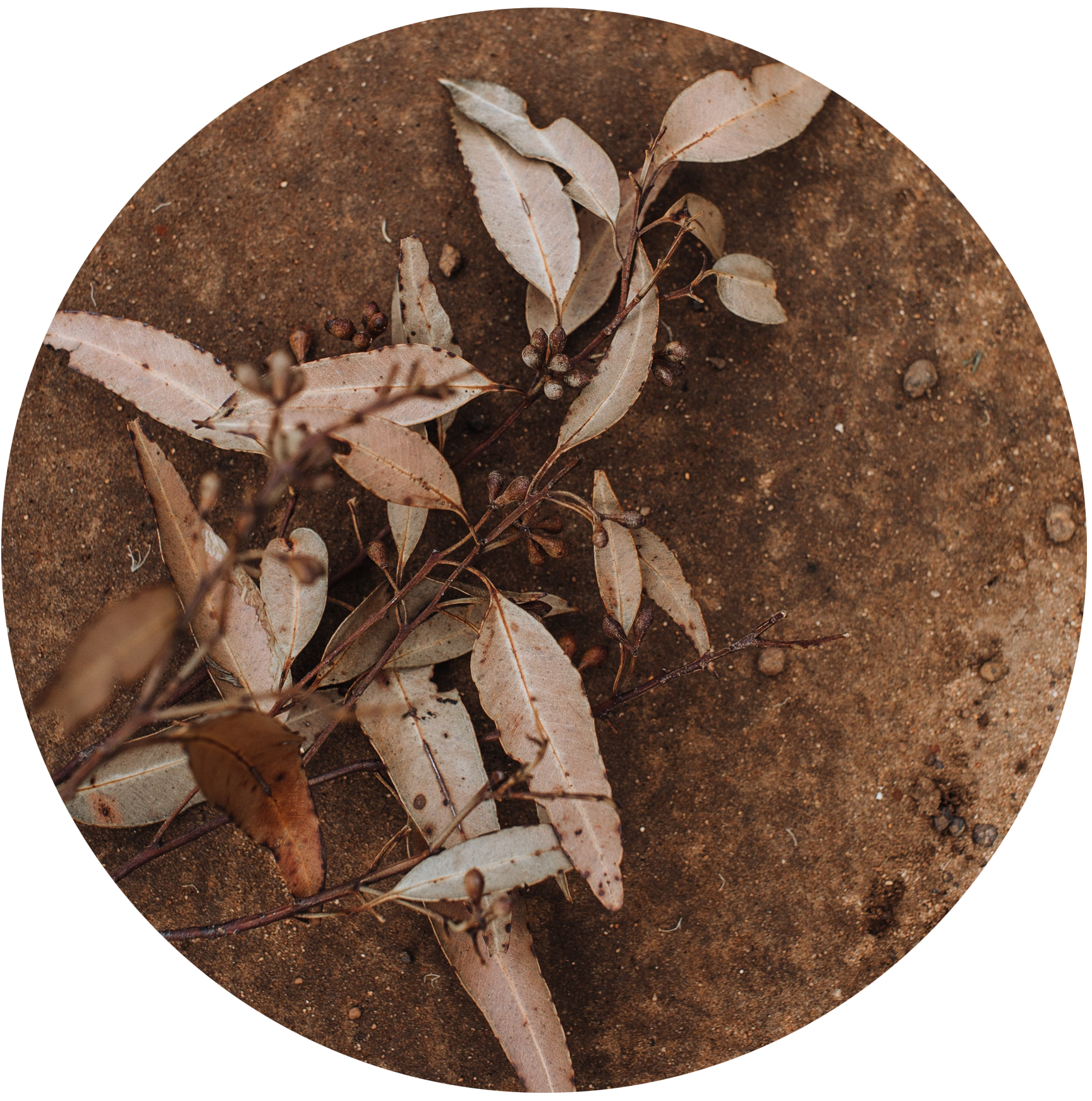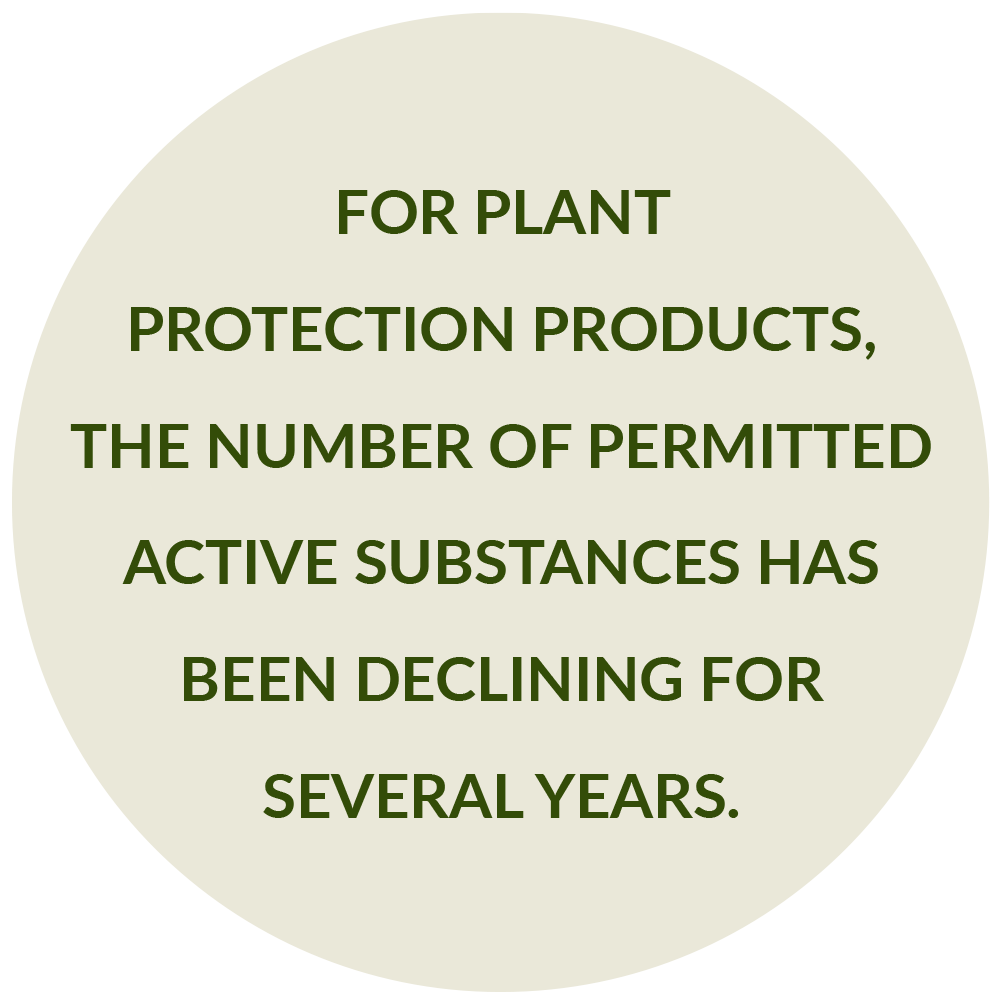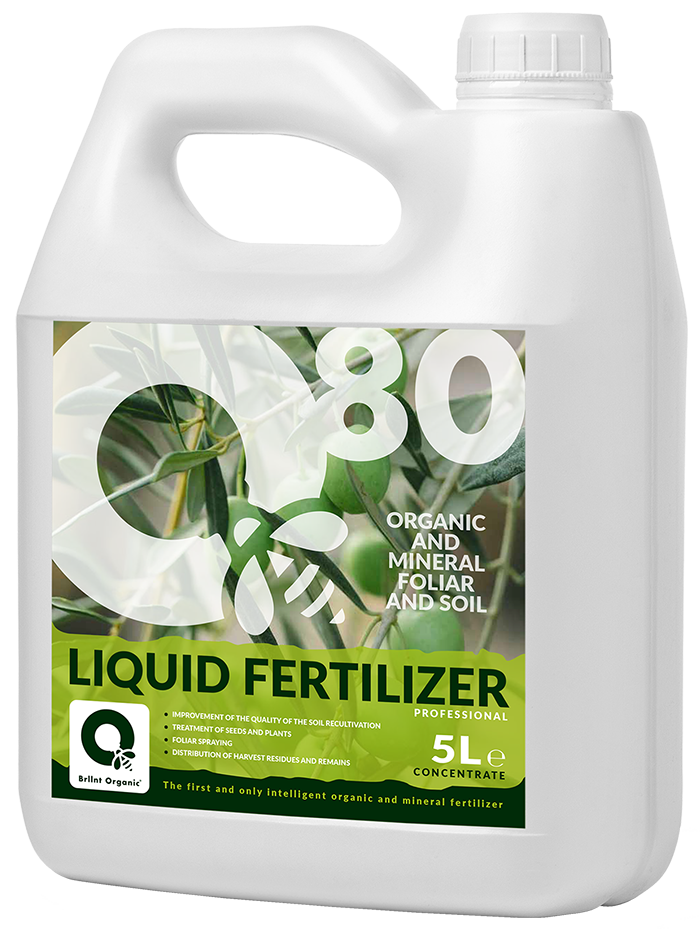Need to reduce fertiliser use!
After the Second World War, there was great pressure on agriculture to increase plant production (farming/greenhouses). Natural methods of plant cultivation were replaced by synthetic mineral fertilizers, such as artificial fertilizer. This led to intensive use of fertilizers all over the world.



In 38% of the world’s cultivated area and 11% of its vegetated area, soil has been degraded in various ways since 1945. (Gardiner & Miller, 2004). This is an area the size of India and China combined.
Europe implements strict rules
In the European Green Deal (2020), the “farm to table” strategy element
Concrete goals:
- 20% less artificial fertilizer use in EU agriculture.
- Share of organic farming up to 25% of all crops.
- 50% less use of pesticides in EU agriculture by 2030.

Important trends
- Growing interest in sustainable, ecological agriculture
- Rise of precision agriculture
- Desire to return to the production of truly healthy food
- Negative attitude of society towards chemicals
- Nitrogen problems
- Stricter regulations and legislation

Why you should start using Brllnt Organic® nature-based alternatives to toxic fertilizers for crops?
Brllnt Organic®, the nature-based alternative to toxic synthetic fertilizers for crops, flowers. Plants need nitrogen to grow properly. Without enough of it, they will not grow tall, will bear yellow leaves, and may produce smaller flowers, crops and fruit. In most of the world, nitrogen is administered to crops via chemical fertilizers. But they cause a wealth of problems. More than half of the synthetic nitrogen can leach out of the soil into bodies of water. There, it causes eutrophication (excess algae growth) which can deplete the water’s oxygen, as well as adversely affect people or livestock that drink the water.
Synthetic nitrogen is also highly polluting to produce. For each metric ton of urea produced in the USA 1.84 metric tons of carbon dioxide were emitted into the air, with even higher amounts at factories in China and India.
Brllnt Organic nature-based solution O-55, O-80 and our other Bio-Organic-Fertilizers seeks to boost crop yields sustainably and strengthen the resilience of plants to climate change.
In nature, plants team up with fungi and bacteria in the soil to convert atmospheric nitrogen into a form that they can use.

Additional potassium and phosphorus recommendation
Brllnt Organic® concentrate contains per 1 liter: at 1,8% phosphorus, 5,2% nitrogen and 3.3% potassium. In combination with other ingredients such as biologically active substances, plant amino acids, macro and microelements, vitamins, humic acids, as well as through the use of our innovative production technologies, it gives a strong impetus to the absorption of phosphorus, potassium and nitrogen and the full development of all plant species.
During the absorption of phosphorus and potassium by plants, it is also important that our fertilizers are applied on the leaf, and all the substances included in their composition are quickly involved in the metabolism of green organisms. The absorption of phosphorus and potassium by the leaves of different crops increases in conditions where the leaf surface has been moistened because the potassium and phosphorus from the solution immediately pass into the absorbed state and are consumed by the plants.
In our experience, we always get the same result. After treating one area with concentrate and leaving the other without processing, the difference is always obvious: even if phosphorus was introduced into the soil as a fertilizer for planting, the crops on which the sheet is processed with concentrate are distinguished by better development and maximum yield.
Ideally, to provide plants with a full diet and constant access to all the necessary nutrients, we recommend using the concentrate together with specially developed mineral fertilizers, which we call O-mineral additive (O-grain, corn other) for cereals and corn, and we also recommend adding our special organic fertilizer O-organic to the processing.
All three types of our fertilizers O-55, O-80 and O-organic “work” in a complex for a common goal: the growth of quantitative and qualitative characteristics, the rapid satisfaction of crops ‘ demand for phosphorus, potassium and nitrogen compounds in a form easily assimilated by plants, and in the case of conducting a large business – improving the profitability of production. We do not know the quality characteristics of the soil, but if there are some problems with the lack of certain elements, it is necessary to increase the content.
When processing the soil with the O-55 or O-80 concentrate, the viability of legumes and cereals increases, the uptake of phosphorus from the soil by 20/25%, potassium by 23/25%, the content of mobile phosphorus in the soil increases 1.5/2 times, ammonium nitrogen by 2/2.5 times, improves the supply of plants with nutrients from the soil, preventing the leaching of easily soluble potassium salts, nitrogen.
Due to the increase in the number of silicate bacteria, potassium metabolized by plants is constantly replenished.
The O-55 or O-80 concentrate increases the number of microorganisms in the soil that decompose insoluble mineral and organic phosphorus compounds.
After applying O-55 or O-80, the availability of soil with assimilated nitrogen reserves improves: the number of ammonium bacteria increases five to ten times. By improving the living conditions of free-living bacteria, after adding O-55 or O-80, their ability to fix molecular nitrogen from the atmosphere increases almost 15 times.
Nitrogen assimilation follows the path of intensification of metabolic processes. When using O-55 or O-80, the need for nitrogen administration is reduced by up to 50%, while the negative processes of nitrate formation slow down. Potassium uptake is accelerated by selectively increasing the permeability of the cell membrane. As for phosphorus, O-55 or O-80, mainly binding Ca, Mg and Al ions, prevents the formation of insoluble phosphates. Therefore, with the increase in the content of humic substances, the absorption of phosphorus by the plant increases.

Corn, in particular, needs large quantities of nitrogen, obliging farmers to buy lots of costly urea.
What Brllnt Organic® is doing is taking cereals such as wheat and corn, which are not legumes, and preparing them to interact with and benefit from the rhizobium, like the legumes do, even though physiologically, they are not programmed to do so.
A ‘bioactivator’ – a special, patented cocktail of plant materials with anti-inflammatory properties – is administered to the cereals to strengthen them for this relationship.
A rough analogy would be the way that a human patient is prepared so that his or her body will accept a transplant.
Farmers won’t pay for a product just because it’s green. It must provide additional yield and quality and save on costs.
And because Brllnt Organic® is producing in a totally different way then Synthetic nitrogen, there is no highly polluting to produce. We save tons of carbon dioxide who normally were emitted into the air, which is a big part of the green footprint we as Brllnt Organic® is trying to establish every day.
Brllnt Organic: Liquid organic and mineral fertilizer concentrate for complete replacement of non organic fertilizers(granules)
